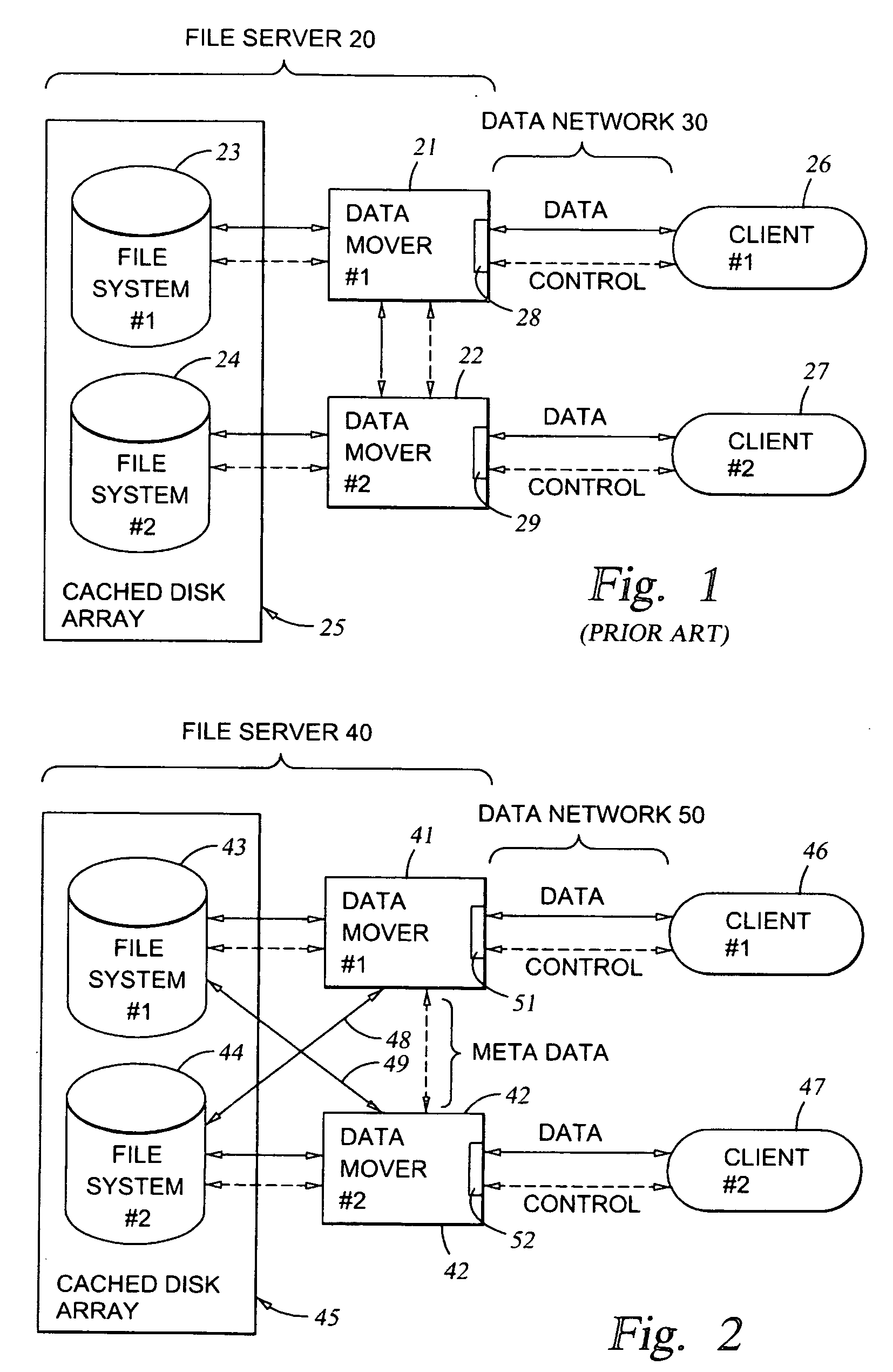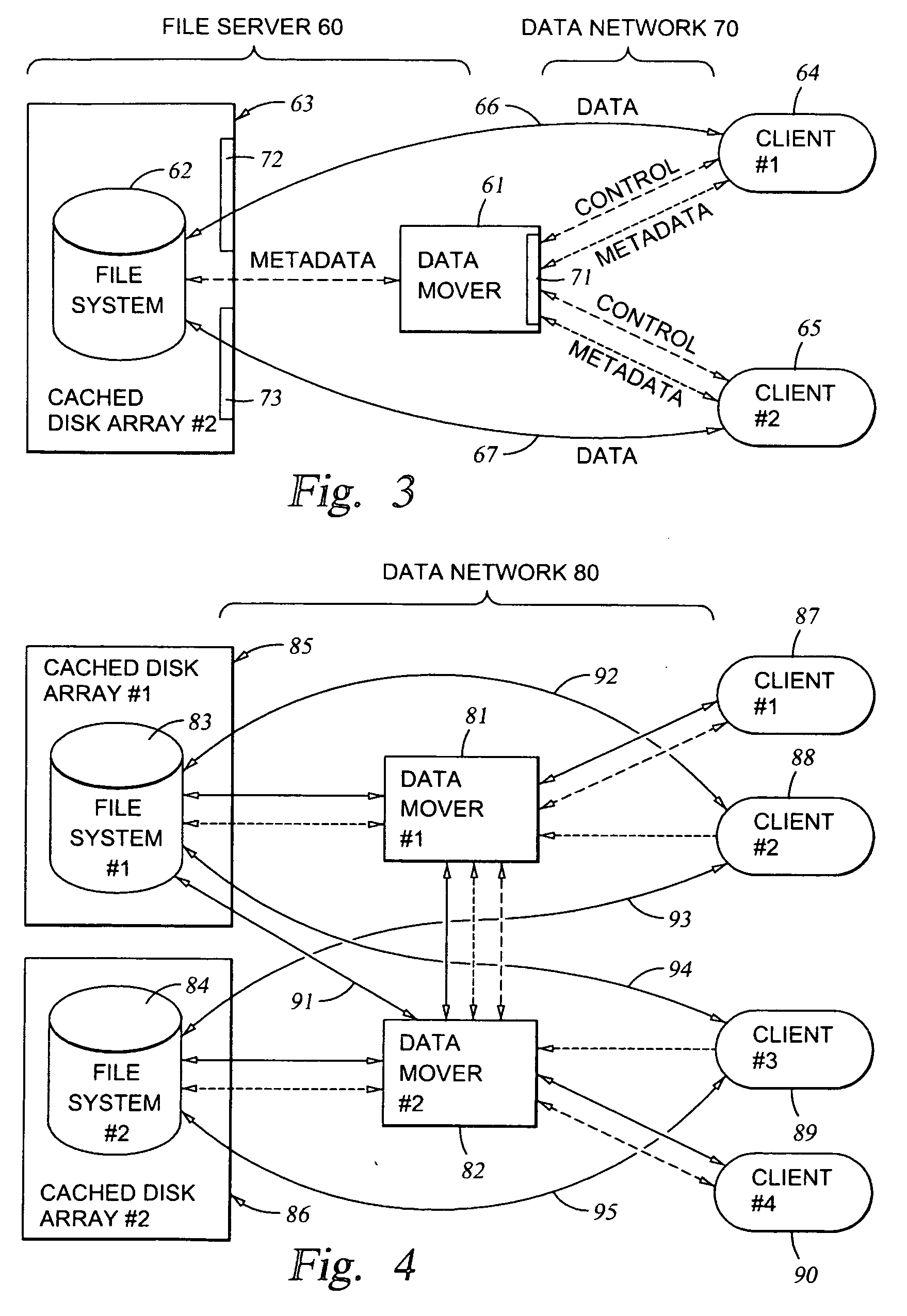File server system providing direct data sharing between clients with a server acting as an arbiter and coordinator
a file server and client technology, applied in the field of network file servers, can solve the problems of data in the cache of a data mover, the inability to provide direct data sharing between clients, etc., to achieve the effect of avoiding the connection between the data movers and the cached disk array, and avoiding the inability to provide direct data sharing
- Summary
- Abstract
- Description
- Claims
- Application Information
AI Technical Summary
Benefits of technology
Problems solved by technology
Method used
Image
Examples
Embodiment Construction
[0046] I. Introduction to Network File Server Architectures for Shared Data Access
[0047] A number of different network file server architectures have been developed that can be used individually or in combination in a network to provide different performance characteristics for file access by various clients to various file systems. In general, the increased performance is at the expense of additional network links and enhanced software.
[0048]FIG. 1 shows the basic architecture of a file server 20 that has been used to permit clients 26, 27 to access the same read / write file through more than one data mover computer 21, 22. As described above in the section entitled “Background of the Invention,” this basic network file server architecture has been used with the NFS protocol. NFS has been used for the transmission of both read / write data and control information. The solid interconnection lines in FIG. 1 represent the transmission of read / write data, and the dashed interconnection ...
PUM
 Login to View More
Login to View More Abstract
Description
Claims
Application Information
 Login to View More
Login to View More - R&D
- Intellectual Property
- Life Sciences
- Materials
- Tech Scout
- Unparalleled Data Quality
- Higher Quality Content
- 60% Fewer Hallucinations
Browse by: Latest US Patents, China's latest patents, Technical Efficacy Thesaurus, Application Domain, Technology Topic, Popular Technical Reports.
© 2025 PatSnap. All rights reserved.Legal|Privacy policy|Modern Slavery Act Transparency Statement|Sitemap|About US| Contact US: help@patsnap.com



